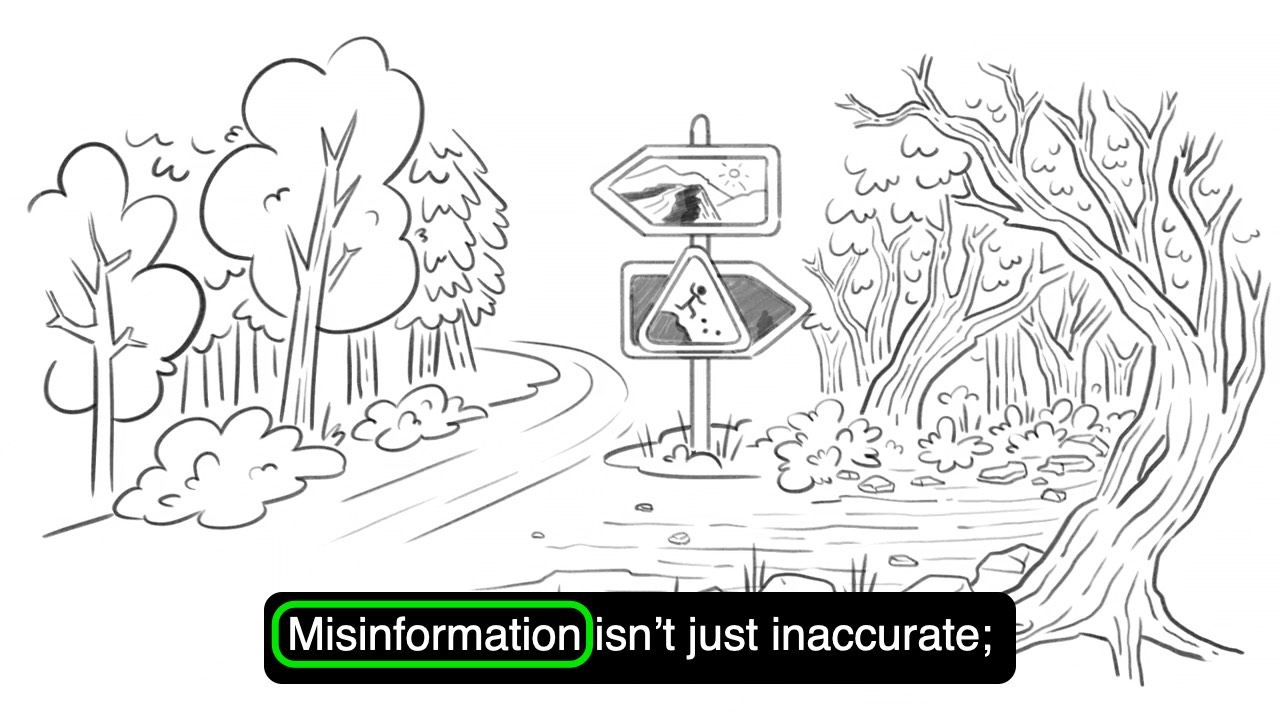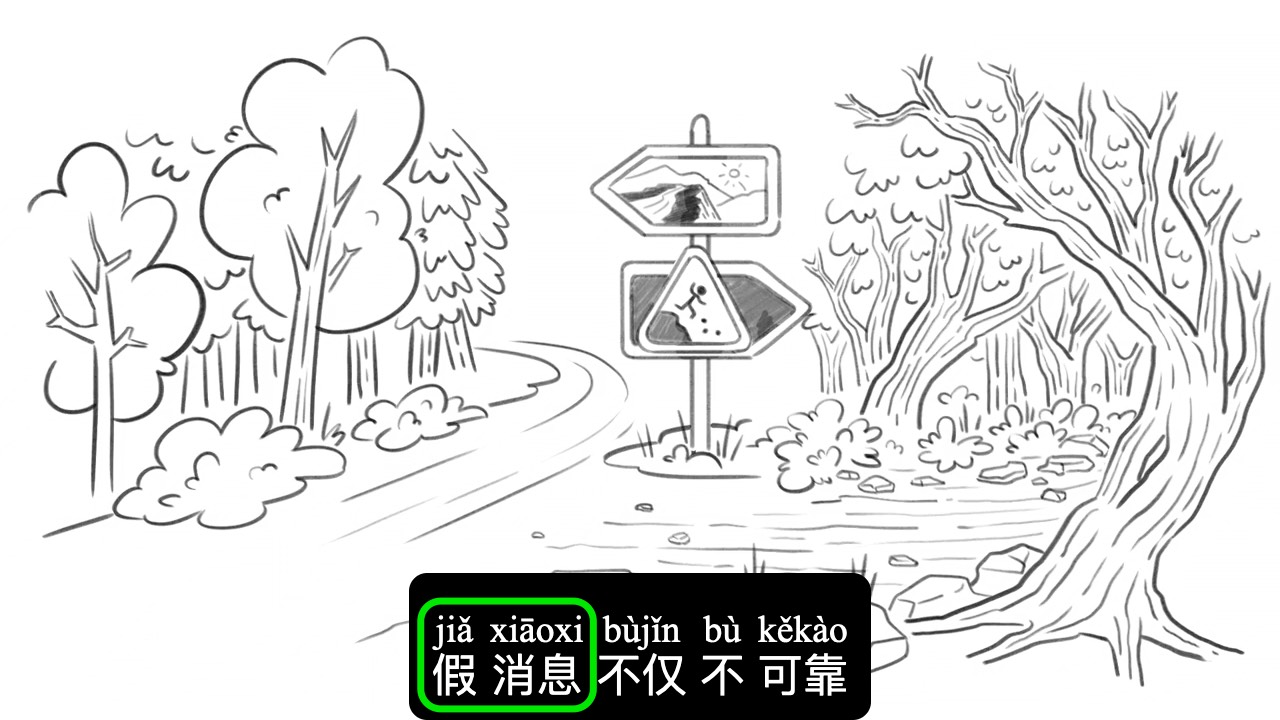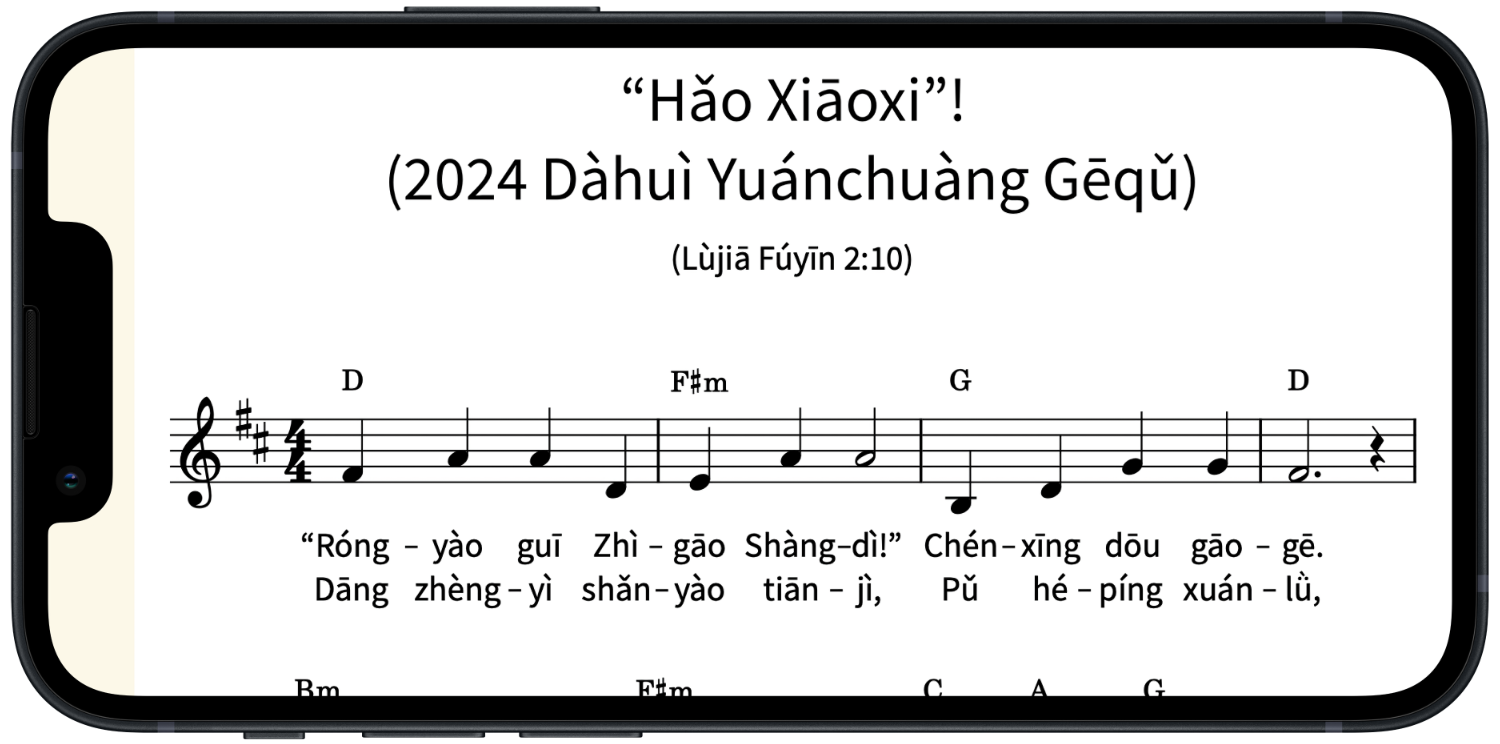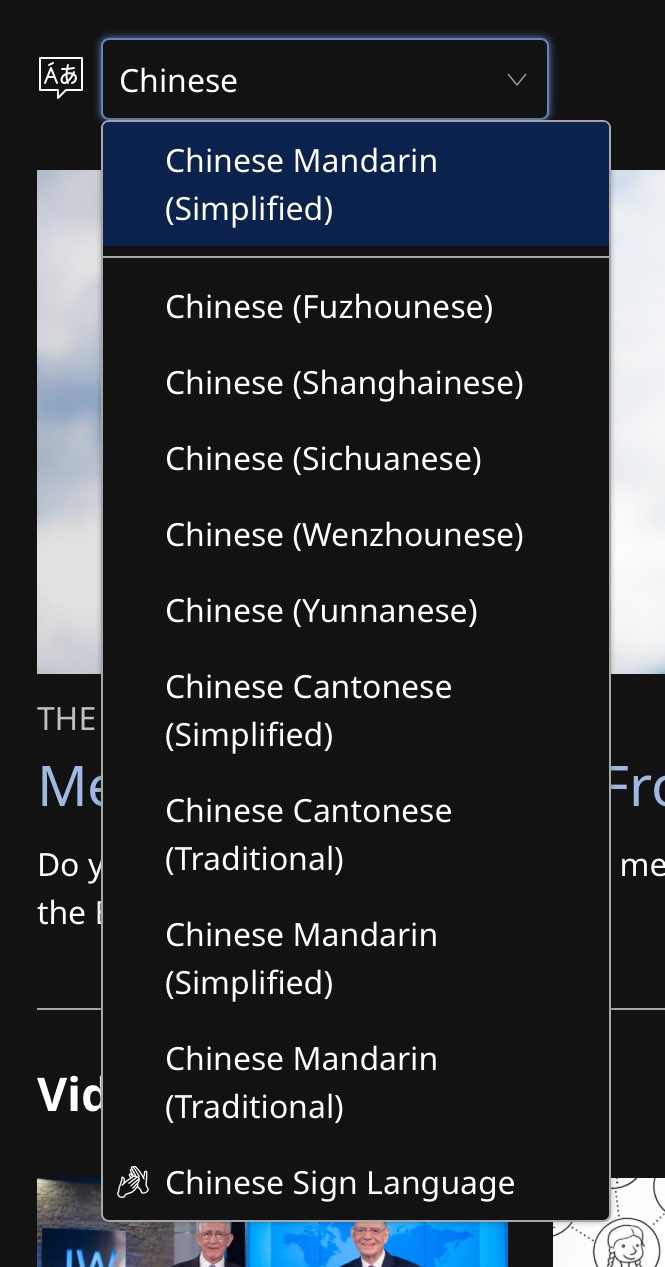jiǎ
(false; fake
假
假/叚)
xiāoxi
(xiāo·xi
disappearing · news → [news; information]
消息)
← Tap/click to show/hide the “flashcard”
At the time of this writing, jw.org was featuring the whiteboard animation video “Protect Yourself From Misinformation”. The English and Mandarin versions of this video match the English word “misinformation” with this week’s MEotW, “jiǎ (false; fake 假 假/叚) xiāoxi (xiāo·xi disappearing · news → [news; information] 消息)”:


[Note: The MEotW post on “shèjiāo wǎngzhàn ((shè·jiāo {god of the land → [society] → [social]} · {meeting → [associating]} → [social contact/interaction] 社交) (wǎng·zhàn {net → [web]} · {stand → [station]} → [website] 网站 網站) → [social networking website; social network])” contains information about how to add unproofread computer-generated Pīnyīn (Pīn·yīn {Piecing Together of} · Sounds → [Pinyin] 拼音) to the subtitles of Mandarin videos on jw.org in most browsers.]
“Jiǎ (false; fake 假 假/叚) xiāoxi (xiāo·xi disappearing · news → [news; information] 消息)” can also be translated as “false news”, “false information”, or perhaps even “fake news”, as confirmed by the entry for this expression in the excellent Referenced Theo. Expressions (RTE) resource.
Disappearing?
“Jiǎ ({[is] false; fake; phony; artificial} | if; supposing; assume; presume | borrow; {avail oneself of} 假 假/叚)” means “false” or “fake”, and “xiāoxi (xiāo·xi disappearing · news → [news; information] 消息)”, while used to effectively mean “news” or “information”, actually literally means “disappearing news”. Why “disappearing”? Perhaps that is a nod to the fleeting nature of news—relatively quickly, when it’s not new anymore, it’s not news anymore.
The Wiktionary entry for “xiāoxi (xiāo·xi disappearing · news → [news; information] 消息)” seems to bear this out, as it says:
消息 (xiāoxi) refers to news as in new information; to express the meaning of news as in reports of current events, use 新聞/新闻 (xīnwén).
“Xiāoxi (Xiāo·xi disappearing · news → [news; information] 消息)” also appears in the expression “hǎo (good 好) xiāoxi (xiāo·xi disappearing · news → [news] 消息)”, meaning “good news”, which we use often in the Mandarin field. In fact, “Hǎo (Good 好) Xiāoxi (Xiāo·xi Disappearing · News → [News] 消息)”! is the title of the concluding song for this year’s Mandarin conventions! (English, Mandarin, Pīnyīn (Pīn·yīn {Piecing Together of} · Sounds → [Pinyin] 拼音) Plus) Also, we will say “Wángguó (Wáng·guó King’s · Nation → [Kingdom] 王国 王國) de (’s 的) hǎo (good 好) xiāoxi (xiāo·xi disappearing · news → [news] 消息)” when we want to refer to “the good news of the Kingdom”. Of course, while the message of this good news will “disappear” as news when it is not news anymore, the Kingdom itself “will stand forever”!—Daniel 2:44.
Myths and Misinformation About Chinese Characters, Etc.
As Mandarin field language learners, we need to be aware that many myths and much misinformation have been spread about the Chinese languages, especially when it comes to Chinese characters. Indeed, there is so much misinformation about Chinese characters that Victor Mair wrote the following in the foreword of the book Ideogram: Chinese Characters and the Myth of Disembodied Meaning, by J. Marshall Unger:
There is probably no subject on earth concerning which more misinformation is purveyed and more misunderstandings circulated than Chinese characters (漢字, Chinese hanzi, Japanese kanji, Korean hanja), or sinograms.
Also, in his book The Chinese Language: Fact and Fantasy, John DeFrancis lists the following myths regarding Chinese characters, that many believe:
- The Ideographic Myth
- The MEotW post on “Hāmǐjíduōdùn (Armageddon 哈米吉多顿 哈米吉多頓)” contains a discussion of this myth, with some selected excerpts on this subject from DeFrancis’ book.
- The Universality Myth
- The Emulatability Myth
- The Monosyllabic Myth
- The Indispensability Myth
- The Successfulness Myth
Regarding these myths, in p. 2–3 of his aforementioned book, J. Marshall Unger provides this summary:
Passing for the moment over the history of how the hunt for the perfect language unfolded, let us jump ahead to the result: the intellectual baggage about Chinese characters that we have inherited from the Renaissance and Enlightenment. John DeFrancis, in his classic book The Chinese Language (1984), sums up that weighty legacy under six headings, and a better summary would be hard to find. The source of all the confusion is what DeFrancis calls the Ideographic Myth, the notion that Chinese characters represent meaning directly, without reference to language (that is, speech) in any way. Its logical extension is the Universality Myth, according to which Chinese script allows for communication between mutually uninteligible dialects and languages. This leads in turn to the Emulatability Myth, which holds that Chinese script can serve as a model for a general system of signs that transcends natural language. These first three myths have little to do with the actual structure or history of the Chinese language or its writing system, in contrast with the remaining three: the Monosyllabic Myth, Indispensability Myth, and Successfulness Myth. Each of these—the names are more or less self-explanatory—makes a strong claim about language and the writing system, claims that have had significant social and political consequences.
At least some of the political consequences referred to above have been deliberate, meaning that at least some of the myths and misinformation spread about Chinese languages and Chinese characters qualify as political propaganda. If we’re not careful, we could end up parroting this political propaganda. (We could also end up parroting worldly human cultural propaganda, which is also a bad thing for people who seek to be no part of the world.) Also, all the difficulties and confusion caused by all the myths and misinformation surrounding Chinese languages and Chinese characters massively hinder the efforts of Mandarin field language learners to stay spiritually strong and to reach the hearts of Mandarin-speakers with Bible truth. This can result in deeply negative spiritual consequences that should be of great concern to us. To complete the sentence quoted from the video mentioned at the beginning of this post:
Misinformation isn’t just inaccurate; it can also be dangerous!

